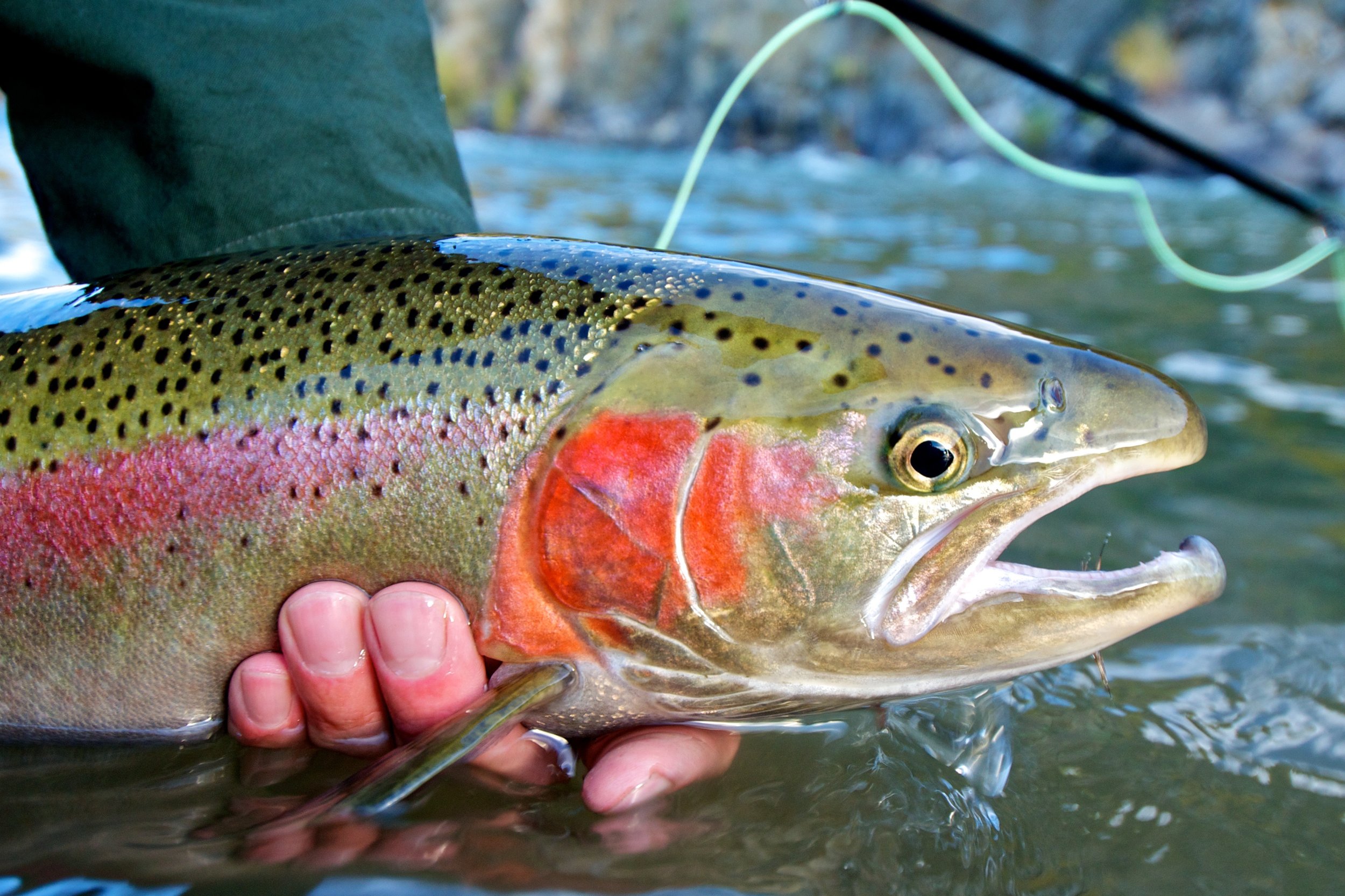“You should’a been here yesterday!” Maybe I’m just a sub-par fly angler, but I hear this phrase constantly. Given the ever-changing weather in this beautiful state I completely understand varying river conditions from day to day. But this phrase brings my mind back to those yesterdays. The days where you met up with your best friends in town, headed to your local river, and for once found no one at your favorite spot. Water flow is on point, the sun was drawing an absolute perfect amount of “shady hidey holes” as my buddy would describe, and when you played eeny, meeny, miny, moe with your fly box, you actually won. These are the days that keep fly fishers like me braving the elements to keep coming back for more.
If you’ve encountered a day like this, chances are good that you squeezed a lot of trout (gently of course). You may have even put a new personal best in the basket. When you’re experiencing this much magic, you need a picture for the ol’ photo album, or for nothing else, clout on social media. I’m not here to judge you, I love a good grip n’ grin from time to time. But I’d like you to remember one thing. Would you like our kids, and grandkids to be able to experience this exact feeling with these fish? Here’s some things to remember as you strive for as many good fishing days as a person can have this year.
First and foremost is temperature. Trout are a cold-water species, and as climate change continues to have a large impact on our planet, we’re seeing high river temperatures on Colorado’s front range as early as June. The most important tool you can carry as a fly fisher is a thermometer. This is the key to finding not only where in the water column the fish are feeding, but also if they can be safely angled. Trout survive the best in temperatures from 44-67 degrees Fahrenheit. When water temperature reaches 68 degrees, they start to become stressed. This is due to a correlation between the water temperature and the amount of dissolved oxygen in the river. The higher the temperature, the less amount of dissolved oxygen in the water. The fish will not recover as quickly, if at all, in higher temps. I personally do not fish in river temperatures above 68 degrees. There are two simple ways to avoid high water temperatures. Do research to find colder water temps in the hot months of the year, and if you want to fish the water at lower elevations, wake up earlier.
Second is air exposure. A good rule of thumb is to keep air exposure to a cumulative total of 10 seconds. This is where a rubber net becomes critical. Being able to keep the fish in the water while you remove the hook is key to its survival, and the success of your hero shot. Barbless hooks will also help aid in the process. A proper hookset and line management is what keeps the fish on the line, not the barb. You’ll look like a pro when that hook removal takes only a few seconds, and if you happen to have a less than perfect cast, the hook hurts a lot less when removed from the back of your scalp.
When all is said and done whether it’s a fingerling or a trophy trout, the choice to photograph it is yours. Just be respectful of our resource when you do so. Remember to keep ‘em wet! The more you practice safe catch and release practices the healthier our trout will be, and in doing so, you’ll be able to say “you should’a been here yesterday” a whole lot more.
For more information regarding safe catch and release practices visit www.keepfishwet.org


